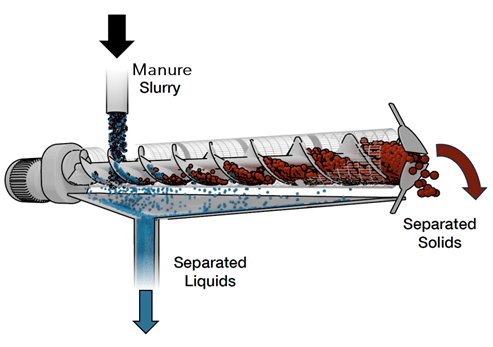How Do You Manage Dairy Manure Storage to Reduce Methane Emissions?
Expert tip: If you want more information about a specific practice, click the link!
The short answer: Your farm can decrease methane emissions by reducing the amount of carbon-rich solids in your manure storage (particularly in summer) and by investing in technologies to capture or inhibit methane generation.
Break it down: When dairy manure is stored in a liquid or slurry storage, the oxygen-free (anaerobic) conditions result in the conversion of carbon in the manure into methane gas. The rate of this conversion is highest in late summer when manure temperatures are at their hottest. So, consider these strategies to reduce the amount of carbon-rich solids in your manure storage.
- Get more manure out: Work with a certified nutrient management specialist to maximize the way you utilize your manure resources.
- Separate manure solids before storage: Solid-liquid separation systems, particularly high efficiency systems that can remove more than 50% of the total solids from manure, can reduce greenhouse emissions by upwards of 60%. Additionally, well-managed solid-liquid separators generate dry manure fibers that many farms use successfully for cattle bedding.
- Minimize the input of excess liquids: Manage barnyard drainage, bunk leachate, and put gutters on your barns to keep excess liquids out of manure storages.
- Utilize solid manure storage systems: Stockpiles and composting can reduce greenhouse emissions by 20-40%. So, keep those packs separate and keep your high solids manure piled high and dry.
- Collect less manure: Recent research suggests that heifers raised on well-managed pasture have higher feed intake and milk production through first lactation. There are health and public perception benefits as well. Consider getting your non-lactation animals out on pasture so you have less manure to store.
Screw-press separators are used by many dairy farms to extract solids (called “separated solids”) from a manure slurry to improve handling and management of manure constituents. Image modified from Larson et al. 2021. Screw Press Separation of Manure (A4192-002/AG-919-02).Capturing methane to burn, fuel a boiler, run a generator to produce renewable electricity, or clean and compress to sell into the natural gas grid are all possibilities. These various strategies all have costs but may also provide value to the farm.
- Anaerobic digestion: Digester reactors are optimized to generate methane from carbon-rich solids so the gas can be utilized as an energy source by the farm. These systems have very high capital and operating costs but can provide the farm value in the form of renewable energy, carbon offsets, and a fertile, low-odor effluent (digestate).
- Cover and flare: Roofs and covers can reduce methane from manure storage. The most efficient systems are gas tight membranes with a gas collection system and biogas flare. Solid-liquid separation needs to occur before covering a storage system, but with flaring this setup is also eligible for carbon offsetting. Additionally, these covers keep rainwater out of the storage, mitigate odor, and retain more nitrogen in the manure.
Inhibit the methane you can’t prevent or capture. Inevitably, there will be some carbon-rich solids in your liquid or slurry manure storage. If digesters and covers seem out of reach, there are a couple of emerging technologies that inhibit methane generation that are worth keeping an eye on.
- Oxygenation: Oxygen in manure prevents microbes from making methane. Some manure storages can be equipped with aeration systems to keep manure aerobic and prevent methane emissions, though ammonia emissions may increase.
- Acidification: Research shows that reducing manure below a pH of 6 using concentrated acids or other means can prevent both methane and ammonia emissions. Work is ongoing to identify affordable strategies for farms to utilize this promising approach.
The big picture: You have lots of options now, with more innovations on the way. Even if methane isn’t your biggest concern, less solids in your storage also helps you more easily manage manure storages and retain that precious storage space.
Photo by Jo-Anne McArthur, Unsplash.









